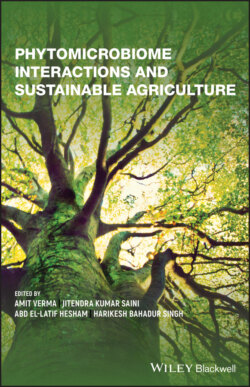Читать книгу Phytomicrobiome Interactions and Sustainable Agriculture - Группа авторов - Страница 34
3.4 Metagenomics of Plant Phyllosphere
ОглавлениеThe aerial habitat occupied by microbes is generally termed as the phyllosphere. The estimated colonized microbial area in the terrestrial leaf surface is about 6.4 × 108 km2 (Morris and Kinkel 2002). Rastogi et al. (2010) found that only 0.1–8.4% of the total bacterial population were cultivable. Phyllosphere microbiome was reported for their involvement in nitrogen fixation, biodegradation of pollutants (Waight et al. 2007), and antibodies production and systemic resistance induction in the host plant (Sundaram et al. 2011; Bodenhausen et al. 2014). Several studies have been conducted to reveal the microbiome of the plant leaf surfaces (Finkel et al. 2016). Methe et al. (2017) identified sets of functional gene annotations that differ between drought and well‐watered maize phyllosphere metagenomes from field plots.
The 454‐pyrosequencing platform comprising rRNA or ITS amplicon sequencing, whole‐genome sequencing, shotgun metagenomics, and transcriptional profiling is widely employed for microbial community analysis (Rastogi et al. 2012; Correa‐Galeote et al. 2018). These revolutionary technological innovations facilitate the comparative microbiome analyses and provided a deep insight into the structural and functional characteristics of phyllosphere microbiome. Furthermore, in an interesting study of netaproteogenomic analysis (includes metagenomics and metaproteomics) of rice microbiome revealed that methanol‐based methylotrophy linked to the genus Methylobacterium dominated within the protein repertoire of the phyllosphere microbiota (Knief et al. 2012). Similarly, a combined metagenomic and metaproteomic approaches were also applied for analyzing the physiology of phyllosphere bacterial communities in situ (Delmotte et al. 2009). Several reports in the public domain reveal phyllosphere microbial diversity through metagenomic approaches (Atamna‐Ismaeel et al. 2012; Ritpitakphong et al. 2016; Mukhtar et al. 2017).
